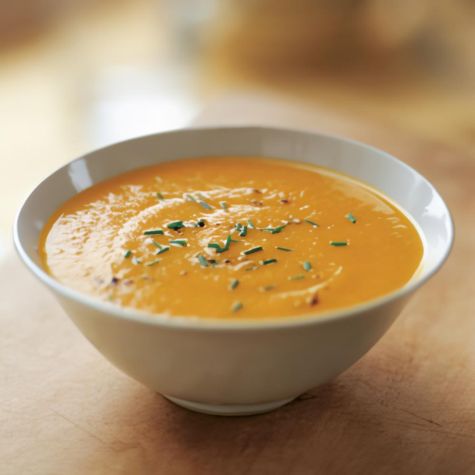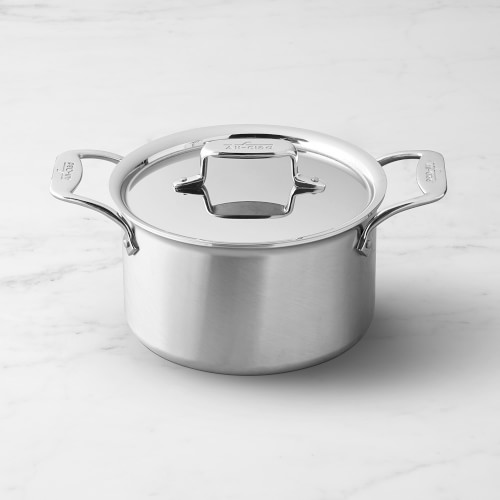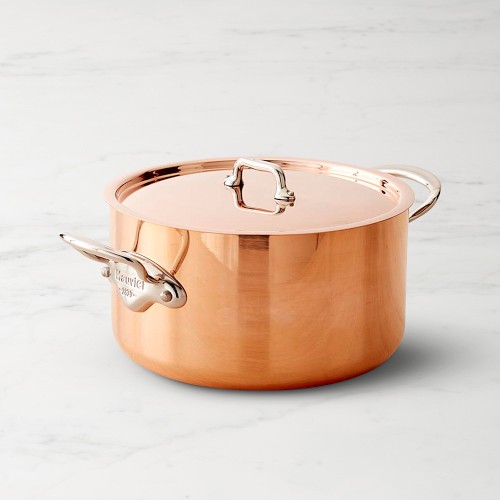
Carrot-Ginger Soup
Ingredients:
For the chicken stock:
- 6 lb. chicken backs and necks
- 1 large or 2 medium yellow onions, quartered
through the stem end - 1 large carrot, peeled and cut into 1-inch lengths
- 1 large celery stalk with leaves, cut into 1-inch
lengths - 1 garlic clove, peeled
- 3 or 4 fresh flat-leaf parsley sprigs
- 1 bay leaf
- 8 to 10 whole peppercorns
- 1 large sweet onion, such as Vidalia or
Walla Walla - 1 lb. carrots
- 2 garlic cloves
- 2-inch piece fresh ginger
- 1 orange
- 2 Tbs. unsalted butter
- 1 tsp. kosher salt
- 1⁄8 tsp. freshly ground pepper
- Several blades of fresh chives
Directions:
In an 8-quart heavy-bottomed pot, combine the chicken parts, onion, carrot, celery, garlic, parsley, bay leaf and peppercorns. Add water just to cover the ingredients by 1 inch.
Bring the stock to a boil
Place the pot over medium-high heat. Without stirring, slowly bring the liquid to a boil. As soon as you see large bubbles begin to form, reduce the heat until only small bubbles occasionally break the surface of the liquid. Use a large slotted spoon to skim the grayish foam that rises to the surface as the liquid reaches a boil, then continue skimming, without stirring, for the first 10 minutes.
Simmer the stock
Simmer the stock, uncovered, adjusting the heat periodically to keep the stock at a slow simmer, for 2 to 2 1¿2 hours, adding more water, if necessary, to keep the ingredients just covered. Do not stir but continue to skim the surface every 30 minutes or so.
Strain the stock
Line a fine-mesh sieve with a triple layer of cheesecloth that has been dampened and squeezed dry, and place it over a large bowl. Place the bowl in the sink, if you like, to make cleanup easier. Using a slotted spoon, remove the larger solids, then ladle or carefully pour the stock through the sieve. Discard the solids in the sieve.
Cool and defat the stock
If you are using the stock immediately, use a large spoon to skim and discard the fat from the surface of the stock, measure out 6 cups and proceed to the next step. If you are not using the stock immediately, cool it in an ice bath until it is at least room temperature. Cover the stock and refrigerate it overnight. The next day, use a large spoon to lift off the fat solidified on the top. Measure out 6 cups of the stock and set it aside for the soup. Cover and refrigerate the remaining stock for up to 3 days or freeze for up to 3 months.
Prepare the vegetables
First, dice the onion: Cut the onion in half lengthwise and peel each half. One at a time, place the onion halves, cut side down, on the cutting board. Make a series of lengthwise cuts perpendicular to the board, then a series of horizontal cuts with the knife blade parallel to the cutting board, and lastly cut crosswise to create 1¿4-inch dice. Be sure to stop just short of the root end; it holds the onion together as you cut. Next, slice the carrots: Peel the carrots, then cut them into slices 1¿4 inch thick. Finally, mince the garlic: Place the garlic cloves on a work surface, firmly press against them with the flat side of a knife and pull away the papery skin. Mince the garlic.
Prepare the ginger and orange zest
Using a paring knife or vegetable peeler, remove the thin beige skin from the fresh ginger, then use a rasp grater to grate enough ginger to measure 1 1¿2 tsp. Use the same fine rasps to grate 1¿2 tsp. zest from the orange. Make sure to grate only the colored portion of the orange peel, leaving the bitter white pith behind. Reserve the orange for another use.
Sweat the vegetables
Place a heavy-bottomed pot over medium-low heat and add the butter. When the butter has melted and the foam begins to subside, add the onion and cook, stirring often, until it softens and is just translucent, about 10 minutes. You do not want the onion to take on any color. This process of slowly cooking the vegetables without letting them brown is called sweating. Add the garlic to the pot and cook, stirring, until it is fragrant, about 30 seconds. Add the carrots and salt to the pot and stir to coat the carrots well with the butter.
Simmer the soup
Add 2 cups of the reserved stock to the pot. The stock should cover the carrots; if not, add more stock. Place the pot over high heat. As soon as you see large bubbles begin to form, reduce the heat until only small bubbles occasionally break the surface of the liquid and cover the pot. After a minute, check to make sure the stock is still at this gentle simmer. Re-cover and cook until the carrots are tender when pierced with the tip of a knife, about 20 minutes. Uncover and remove from the heat. Let the soup cool to lukewarm.
Puree the soup
Insert an immersion blender into the pot and puree the soup, moving the wand to ensure that all the ingredients are evenly pureed. Take care to immerse the blade completely to prevent spattering. (You can also use a food processor or blender for this step.)
Finish the soup
Preheat an oven to 200°F and place individual bowls in the oven to warm. Return the soup to medium-low heat and gradually whisk in the remaining 4 cups stock. Stir in the ginger and the orange zest. Reheat gently, stirring every now and again, until the soup is hot, about 10 minutes.
Adjust the seasonings
Add the pepper, then taste the soup. It should have a deep carrot flavor enhanced by onion and garlic, with accents of orange and ginger. If you feel the soup tastes dull, stir in a little more salt or pepper to perk up the flavors.
Serve the soup
Using kitchen scissors, snip the chives into tiny pieces. Ladle the soup into the warmed bowls and garnish with the chives. Serve immediately. Serves 4.
Chef's Tips: If you already have chicken stock on hand, use 6 cups prepared chicken stock and begin the recipe with the paragraph that says, "Prepare the vegetables."
Because soups reduce in volume as they simmer, which concentrates their flavors, always season them at the end of cooking. If done at the beginning, you might end up with an overseasoned soup.
Adapted from Williams-Sonoma Mastering Series, Soups & Stews, by Marie Simmons (Simon & Schuster, 2005).












